Pull-ups are one of the most effective and challenging exercises to build upper body strength and improve overall fitness. Whether you're an experienced athlete or a beginner, mastering the pull-up can be a game-changer for your workout routine. However, getting better at pull-ups requires more than just repetition. It involves building strength, improving form, and having the right strategies in place to progress steadily.
In this comprehensive guide, we will explore how to master pull-ups, focusing on building strength, enhancing your form, and integrating effective strategies into your fitness routine. We’ll share actionable tips, expert advice, and research-backed insights to help you improve your pull-up performance, whether you're looking to increase your reps or achieve your first successful pull-up.
Why Pull-Ups Matter
Pull-ups are an exceptional compound exercise that engages multiple muscle groups, including the lats, shoulders, biceps, and core. They are often considered a true test of upper body strength. Not only do pull-ups help to develop a strong, toned back, but they also improve grip strength and overall stability.
However, achieving consistent progress in pull-ups can be frustrating for many individuals, especially when you're stuck at a certain number of reps or struggling to perform the movement correctly. But fear not—improvement is entirely possible with the right strategies and training approach.
Step 1: Build Your Pull-Up Strength
Start with Fundamental Exercises
Before you jump into performing pull-ups, it's essential to build the necessary strength. Start by performing exercises that target the same muscle groups involved in a pull-up. These exercises will lay a solid foundation for your pull-up training.
Lat Pulldowns: The lat pulldown machine mimics the motion of a pull-up and is a great way to build your back and bicep muscles. Start with a weight that allows you to complete 8-12 reps with proper form, and gradually increase the weight as you gain strength.
Rows (Dumbbell or Barbell): Rows engage your lats, biceps, and forearms, which are critical for pull-ups. Incorporate bent-over rows or dumbbell rows into your routine to strengthen these muscles.
Bicep Curls: While biceps are just one part of the pull-up movement, having strong biceps can make a significant difference in your ability to perform pull-ups. Regular bicep curls will increase arm strength and help with the pulling motion.
Dead Hangs: Hanging from a pull-up bar for as long as you can helps build grip strength and improve your ability to hold onto the bar during the pull-up movement.
Use Assisted Pull-Up Machines or Bands
If you’re still working towards your first pull-up, using assistance can be extremely beneficial. Assisted pull-up machines or resistance bands can help reduce the amount of body weight you're lifting, making it easier to complete the movement. This allows you to focus on form and technique while building the necessary strength for unassisted pull-ups.
As you get stronger, gradually reduce the assistance to increase the challenge and build muscle memory. Eventually, you’ll be able to perform a full, unassisted pull-up.
Step 2: Focus on Proper Form
Proper form is crucial for performing pull-ups efficiently and avoiding injury. It’s common for beginners to rely on momentum or poor body positioning, which can limit the effectiveness of the exercise and put unnecessary strain on joints and muscles.
Here are a few key points to keep in mind for optimal form:
Grip the Bar Correctly: Your hands should be placed slightly wider than shoulder-width apart on the pull-up bar. Your palms should face away from you (overhand grip) unless you are doing chin-ups (palms facing toward you)
Engage Your Shoulders: Before you begin the pull-up motion, engage your shoulder blades by pulling them down and back. This will ensure that your lats are activated properly, helping you perform the exercise with the correct muscles.
Avoid Swinging: One of the most common mistakes in pull-ups is using body momentum to propel yourself upward. Instead, keep your body straight and engage your core to avoid swinging. The movement should be slow and controlled.
Pull Your Chin Above the Bar: Aim to pull yourself all the way up so your chin is above the bar. This ensures that you’re engaging your lats fully, rather than relying solely on your arms.
Lower Slowly: Don’t drop quickly after reaching the top position. Slowly lower yourself back to the starting position to increase time under tension, which will enhance muscle growth.
By focusing on these form fundamentals, you will not only get better results from your pull-up training, but you’ll also prevent unnecessary strain on your shoulders and elbows.
Step 3: Increase Reps and Volume Gradually
The key to improving in pull-ups is progressive overload. In other words, you need to gradually increase the intensity of your workouts over time. Here's how you can do that:
Set Rep Goals: Start by establishing a baseline for how many pull-ups you can perform in a single set. Once you can complete a set with good form, aim to increase the number of reps in your next workout.
Increase Frequency: Instead of performing pull-ups just once a week, try incorporating them into your workout routine 2-3 times per week. Just ensure that you allow at least 48 hours of rest between sessions for recovery.
Use Different Variations: To challenge your muscles in different ways, incorporate variations of the pull-up into your routine. For example:
Wide-Grip Pull-Ups: Focus on your lats and upper back.
Chin-Ups: Use an underhand grip to engage the biceps more.
Chest-to-Bar Pull-Ups: Bring your chest all the way to the bar for a greater range of motion.
Step 4: Incorporate Other Upper Body Exercises
While pull-ups are excellent for building upper body strength, complementing them with other exercises will further enhance your progress. Incorporate exercises that target the chest, shoulders, and arms to improve muscle balance.
Push-Ups: These will strengthen your chest and triceps, giving you more pushing power in your upper body
Overhead Press: Strengthen your shoulders with overhead presses, which will support the overhead movement in a pull-up.
Dips: Dips target the chest, shoulders, and triceps, adding an extra layer of pushing strength to balance the pulling motion of pull-ups.
By building strength in the upper body as a whole, you will improve your pull-up performance and reduce the risk of muscle imbalances that could lead to injury.
Step 5: Stay Consistent and Be Patient
Improvement in pull-ups doesn’t happen overnight. It takes time, consistency, and patience to build the strength and technique necessary for success. Here’s how to stay motivated and on track:
Track Your Progress: Keep a log of your pull-up workouts, including the number of reps and sets, as well as the assistance level if you're using bands or machines. Tracking your progress will help you stay motivated as you see steady improvement.
Rest and Recover: Just like any other exercise, pull-ups require adequate recovery time. Ensure you’re getting enough rest between workouts, eating a balanced diet, and sleeping well to allow your muscles to grow and repair.
Don’t Get Discouraged: Pull-ups are challenging, and it’s normal to hit plateaus along the way. If you feel like you’re not improving, try adjusting your training routine or focusing on different variations to keep progressing.
Research & Sources
Studies have shown that exercises like pull-ups that engage multiple muscle groups are more effective in building strength and endurance. According to a study published in the Journal of Strength and Conditioning Research, compound movements like pull-ups lead to significant improvements in muscle mass, strength, and overall fitness levels. Experts in strength training recommend incorporating bodyweight exercises, such as pull-ups, to build functional strength that carries over into other physical activities.
For more in-depth information on building strength through pull-ups and bodyweight exercises, the National Strength and Conditioning Association (NSCA) provides comprehensive guidelines on developing a pull-up training program.
FAQ
Q: How many pull-ups should I be able to do?
A: The number of pull-ups you should be able to do depends on your fitness level. Beginners might start with assisted pull-ups, while intermediate athletes can aim for 5-10 unassisted pull-ups per set. Advanced individuals can aim for 20+ reps.
Q: How long does it take to improve pull-ups?
A: Improvement varies based on individual factors, including starting fitness level and consistency. With consistent practice, most people can see noticeable progress within 4-6 weeks.
Q: What’s the best way to increase pull-up strength?
A: Focus on a combination of strength-building exercises, proper form, and progressive overload. Supplement your pull-up training with exercises like lat pulldowns, rows, and dead hangs.
Conclusion
Pull-ups are a powerful exercise that can significantly improve your upper body strength, but mastering them takes dedication and the right approach. By following the strategies outlined in this guide—building strength, focusing on form, and gradually increasing intensity—you’ll be on your way to performing more pull-ups and seeing better results.
Remember, consistency is key, and don’t be discouraged by setbacks. Stay patient, track your progress, and soon enough, you’ll be mastering pull-ups and unlocking new fitness achievements. For more advanced equipment and training resources to support your fitness journey, visit Hamilton Home Fitness.
Take the first step towards mastering your pull-ups today!





